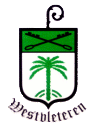
Kontich is a municipality located in the Belgian province of Antwerp. The municipality comprises the towns of Kontich proper and Waarloos. In 2021, Kontich had a total population of 21,260. The total area is 23.67 km3.

Malle is a municipality located in the Campine region of the Belgian province of Antwerp. The municipality comprises the villages of Oostmalle and Westmalle. In 2021, Malle had a total population of 15,620. The total area is 51.99 km2.

Trappist beer is brewed by Trappist monks. Thirteen Trappist monasteries—six in Belgium, two in the Netherlands, and one each in Austria, Italy, England, France, and Spain— produce beer, but the Authentic Trappist Product label is assigned by the International Trappist Association (ITA) to just ten breweries that meet their strict criteria. As of 2021, Achel is no longer recognized as a Trappist brewery because it does not have any monks.

The Trappists, officially known as the Order of Cistercians of the Strict Observance and originally named the Order of Reformed Cistercians of Our Lady of La Trappe, are a Catholic religious order of cloistered monastics that branched off from the Cistercians. They follow the Rule of Saint Benedict and have communities of both monks and nuns that are known as Trappists and Trappistines, respectively. They are named after La Trappe Abbey, the monastery from which the movement and religious order originated. The movement began with the reforms that Abbot Armand Jean le Bouthillier de Rancé introduced in 1664, later leading to the creation of Trappist congregations, and eventually the formal constitution as a separate religious order in 1892.

Westvleteren is a brewery founded in 1838 at the Trappist Abbey of Saint Sixtus in Vleteren, Belgium.

Westmalle is a village in the Belgian province of Antwerp which is part of the municipality of Malle.

Westmalle Brewery is a Trappist brewery in the Westmalle Abbey, Belgium. It produces three beers, designated as Trappist beer by the International Trappist Association. Westmalle Tripel is credited with being the first golden strong pale ale to use the term Tripel.

Beer in Belgium includes pale ales, lambics, Flemish red ales, sour brown ales, strong ales and stouts. In 2018, there were 304 breweries in Belgium, including international companies, such as AB InBev, and traditional breweries, such as Trappist monasteries. On average, Belgians drink 68 litres of beer each year, down from around 200 each year in 1900. Most beers are bought or served in bottles, rather than cans, and almost every beer has its own branded, sometimes uniquely shaped, glass. In 2016, UNESCO inscribed Belgian beer culture on their list of the intangible cultural heritage of humanity.

Affligem Abbey is a Benedictine abbey in the historic village of Hekelgem, now in the municipality of Affligem, Flemish Brabant, Belgium, 19 km (12 mi) to the north-west of Brussels. Dedicated in 1086, it was the most important monastery in the Duchy of Brabant and therefore often called Primaria Brabantiae.

Dom Martinus Dom, O.C.R., was a Belgian Trappist monk. He served as the first abbot of the Trappist Abbey of Westmalle, where he founded the Westmalle Brewery.

La Trappe Abbey, also known as La Grande Trappe, is a monastery in Soligny-la-Trappe, Orne, France. It is known for being the house of origin of the Trappists, to whom it gave its name.

St. Sixtus' Abbey, Westvleteren, which belongs to the Cistercians of Strict Observance, or Trappists, is a Roman Catholic abbey located in Westvleteren, in the Belgian Province of West Flanders. The abbey is famous for its spiritual life, characterised by prayer, reading, and manual work, the three basic elements of Trappist life. It has also a reputation for its brewery, one of several producers of Trappist beer in Belgium.

The Trappist Abbey of Achel or Saint Benedictus-Abbey or Achelse Kluis, which belongs to the Cistercians of Strict Observance, is located in Achel in the Campine region of the province of Limburg. The abbey was famous for its spiritual life and its brewery, which was one of only a few Trappist beer breweries in the world. Life in the abbey was characterised by prayer, reading and manual work, the three basic elements of Trappist life. The monastic community came to an end in January 2021, with the last two monks moving to Westmalle Abbey.

Scourmont Abbey is a Trappist monastery on the Scourmont plateau, in the village of Forges which is part of Chimay in the province of Hainaut, Belgium. The abbey is famous for its spiritual life and for running the Chimay Brewery, one of the few producers of Trappist beer.

Brecht Abbey, also known as the Abbey of Our Lady of Nazareth, is an abbey of Trappistine nuns located in Brecht, in the Campine region of the province of Antwerp. Life in the abbey is characterized by prayer, reading and manual work, the three basic elements of Trappist life.
Augustin de Lestrange was a French Trappist abbot, an exile from France after the French Revolution.

Lilbosch Abbey is a monastery of the Trappists founded in 1883 and located in Lilboscherveld in Pepinusbrug, Echt, Limburg, in the Netherlands.

Koningshoeven Abbey is a monastery of the Trappists founded in 1881 in Berkel-Enschot in North Brabant, the Netherlands.
Fransiskus "Frans" Harjawiyata O.C.S.O. was an Indonesian Roman Catholic monastic abbot and member of the Order of Cistercians of the Strict Observance, who are more commonly known as the Trappists. Harjawiyata, who was the first Indonesian-born Trappist abbot in the country's history, headed the St. Mary's of Rawaseneng Monastery in Temanggung Regency, Central Java province, from 1978 to 2006. Harjawiyata is credited with helping to develop Christianity in Indonesia by translating Catholic scriptures and chants into Indonesian. He translated the Breviary from Latin into Indonesian, authored several books on spirituality, and composed several Indonesian-language Gregorian chants. His chants are still performed in Catholic churches throughout Indonesia today.


















